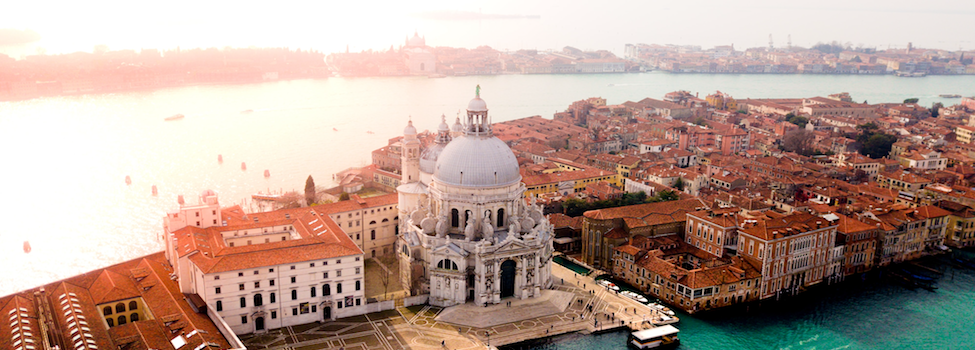Made in Italy: Masters in Management Programs Meld Innovation and Heritage

SMEs, the backbone of Italy’s economy, want overseas talent to help take their products and services across borders
The “Made in Italy” brand guarantees fine quality, authenticity and a sense of style that is globally praised in industries like fashion.
But there is another less well-known Italian brand that is renowned across the world: the country’s masters in management (MiM) courses. Italian business schools excel in this area of business education, taking many of the top spots in key rankings such as those produced by the Financial Times.
More generally, higher education in Italy is highly esteemed with a wide range of academic institutions that warmly welcome international students.
Massimo Magni, director of the MSc in International Management, at SDA Bocconi School of Management in Milan, highlights several advantages to studying in Italy versus elsewhere in the world. He says that a MiM program in Italy offers a rich learning experience because it exposes students to both innovation and heritage.
“Italy is a place where tradition meets innovation, and this is reflected in several industries and businesses, from fashion and design to food,” he says.
The Italian lifestyle may also be attractive to prospective students. “Italian cities are very livable, but at the same time they are vibrant,” Magni says. “You can be at the center of the world, experiencing the most innovative trends now, and walk ten-minutes and immerse yourself in cultural traditions.”
He says that Italy’s multicultural cities are welcoming of international students, and most people will speak English as a second language. Moreover, many Italian companies want overseas talent to help take their products and services across borders.
“Made in Italy”
Small and medium businesses (SMEs), and especially family-owned firms, have traditionally been the backbone of the Italian economy and the driver of the powerful Made in Italy brand. These companies have increasingly opened up their executive roles to external professionals, and they are going global in search of growth.
“Italian companies are now on the international map, so they are looking for international talent to support their global expansion,” says Magni.
It’s estimated that family businesses are 784,000-strong in Italy, accounting for more than 85 percent of all enterprises in the country and 78 percent of all employment.
This entrepreneurial mindset generates different and interesting case studies that can be analyzed by management students, says Paolo Boccardelli, dean of Luiss Business School in Rome.
“Samples of companies that have evolved from an entrepreneurship project into global brands can easily be found all around the country. One example is Technogym, a world leader of the fitness industry,” Boccardelli says.
However, he says that Italy could develop ways to improve the ecosystem for entrepreneurs. Currently, in the Doing Business 2020 ranking, among 190 countries, Italy is ranked 58. “There are still opportunities for improvements in areas like access to credit, taxes and enforcing contracts,” says Boccardelli.
Italy: solid job prospects for MiM graduates
In many ways, post-MiM job prospects in Italy look rosy. According to Confindustria, a huge gap between business demand and training supply exists in Italy, and it means that tens of thousands of technical roles will go unfilled in the next years.
This is mainly due to the lack of skilled workers applying for jobs. The study estimates that between 2019-2021 there will be around 193,000 job vacancies in the food, technology, mechanical, textile, chemical and wood-furniture sectors. A further 45,000 jobs are expected to be available in the technology sector.
In order to fill these gaps, Boccardelli says it is necessary to build a constructive dialogue between education and business in Italy. “Recent estimates about human capital and connectivity reveal that Italy has to work hard to be more competitive within the European and global landscape,” he says.
He also stresses his school’s commitment to diversity and inclusion. “We aim to develop international classes so that they can really appreciate every cultural aspect and exchange in Italy.”
For many of his overseas students, it’s the cultural attractions that are the big draw of studying in Italy. “Rome is called the eternal city; it hides thousands of years of history,” says Boccardelli. “Cultural heritage inspired many Italian entrepreneurs to create wonderful and world-leading brands such as Ferrari and Lamborghini or Ferrero or Barilla.”
The social life is also vibrant, but he adds that the cost of living can be high in large cities like Rome or Milan. Still, it’s the elements that contribute to the overall study experience that are attractive to MiM aspirants, according to Andrew Crisp, a higher education consultant.
“Culture, history and way of life are all of great importance to brand Italy, but there are also important business angles — Italy has a large family business sector and many well-known brands in the luxury end of the market, so for students interested in these fields there are particular advantages,” he says.
He adds that language can sometimes be a problem off-campus with fewer English speakers than in some European countries, so learning a little Italian can be helpful. And navigating the bureaucracy can sometimes be a little tricky, but neither of these are insurmountable problems nor are they reasons for choosing not to study in Italy.






